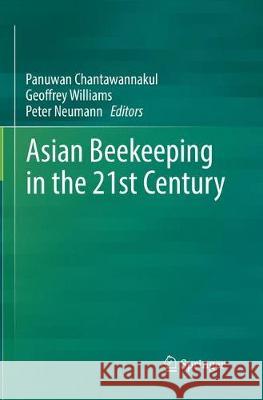Asian Beekeeping in the 21st Century » książka
Asian Beekeeping in the 21st Century
ISBN-13: 9789811340963 / Angielski / Miękka / 2019 / 325 str.
Asian Beekeeping in the 21st Century
ISBN-13: 9789811340963 / Angielski / Miękka / 2019 / 325 str.
(netto: 406,69 VAT: 5%)
Najniższa cena z 30 dni: 424,07 zł
ok. 20 dni roboczych.
Darmowa dostawa!
From the perspective of local scientists, this book provides insight into bees and beemanagement of Asia, with a special focus on honey bees.Asia is home to at least nine honey bee species, including the introduced European honeybee, Apis mellifera . Although A. mellifera and the native Asian honey bee, Apis cerana ,are the most commonly employed species for commercial beekeeping, the remainingnon-managed native honey bee species have important ecological and economic roleson the continent. Species distributions of most honey bee species overlap in SoutheastAsia, thus promoting the potential for interspecies transmission of pests and parasites,as well as their spread to other parts of the world by human translocation.Losses of managed A. mellifera colonies is of great concern around the world, includingin Asia. Such global colony losses are believed to be caused, in part, by pests andparasites originating from Asia such as the mite Varroa destructor, the microsporidianNosema ceranae , and several bee viruses.Taking advantage of the experience of leading regional bee researchers, this book providesinsight into the current situation of bees and bee management in Asia. Recentintroductions of honey bee parasites of Asian origin to other parts of the world ensuresthat the contents of this book are broadly relevant to bee scientists, researchers, governmentoffi cials, and the general public around the world.











